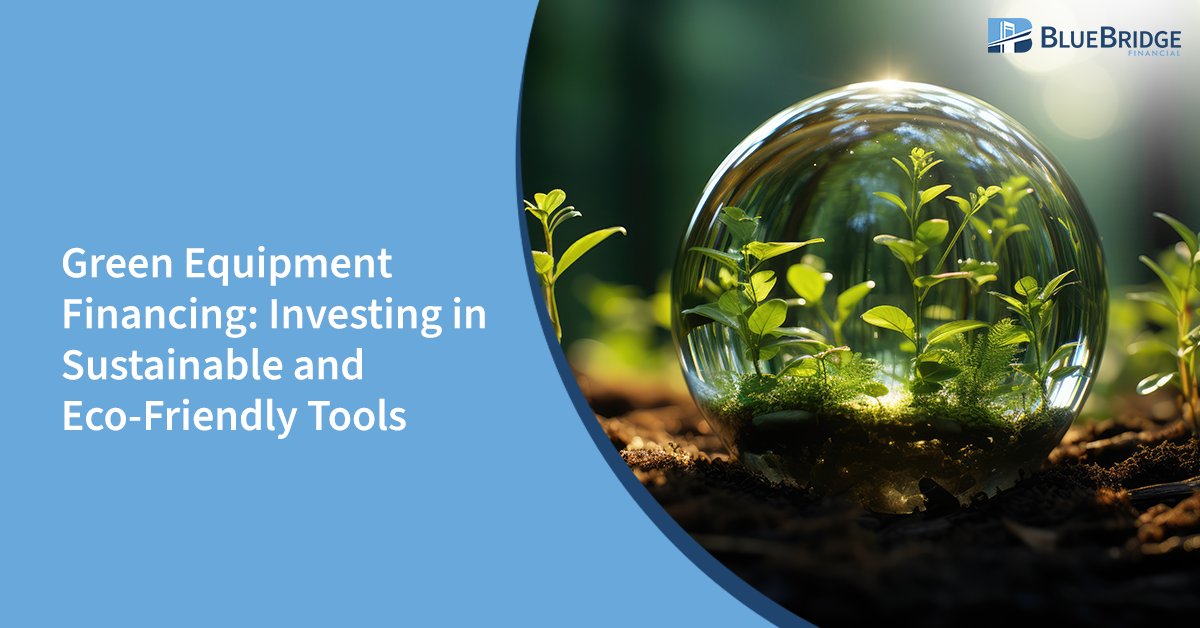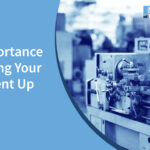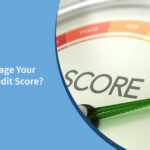Green Equipment Financing: Investing In Sustainable and Eco-Friendly Tools
Power Up with Purpose: Financing Solutions for Eco-Friendly Equipment
As you start planning your next investment in commercial equipment, consider upgrading your fleet and other equipment to be eco-friendly. Sustainable equipment isn’t just a way to show your corporate values; it can also bring cost savings and tax breaks. In this article, we’ll explain what green equipment is, how it can benefit your business both financially and in terms of PR, and how to get started with green equipment financing.
What is Green Equipment?
To be considered “green,” physical equipment and technology must come from an environmentally friendly production process or supply chain. Usage of the equipment should also be sustainable–for example, a fleet of hybrid or electric vehicles vs. gas-powered.
The purpose of using green equipment in your business is to conserve resources and protect the environment from additional harm. Of course, a business is a for-profit entity, so it’s helpful to know that green equipment can also provide cost-savings for your operation and attract customers who share a concern for the earth.
Common examples of green technology include:
- Alternative energy sources: Solar and wind power are the most popular alternative energy sources right now. Businesses can save money on utility bills and take advantage of tax incentives for installing solar panels on their building.
- Lighting: Tax incentives are available for commercial buildings that switch to energy-efficient lighting, such as LEDs as opposed to fluorescent).
- Electric Vehicles (EVs): Transportation is a big source of greenhouse gas emissions. Converting your fleet of trucks, vans, or other vehicles to electric can save your business money on fuel while also reducing pollution.
- Sustainable Agriculture: If you have a farm or other type of agriculture business, you can utilize organic farming techniques, innovations in cattle feed, and green equipment to reduce your carbon footprint.
- …and more! Depending on the type of business you have, there are plenty of small ways to go green. For example, installing motion sensor lighting can help reduce electricity usage, as can turning computers off at the end of each day. A restaurant could eliminate paper towels in their bathrooms and install hand dryers instead. A store could use recyclable paper bags instead of plastic.
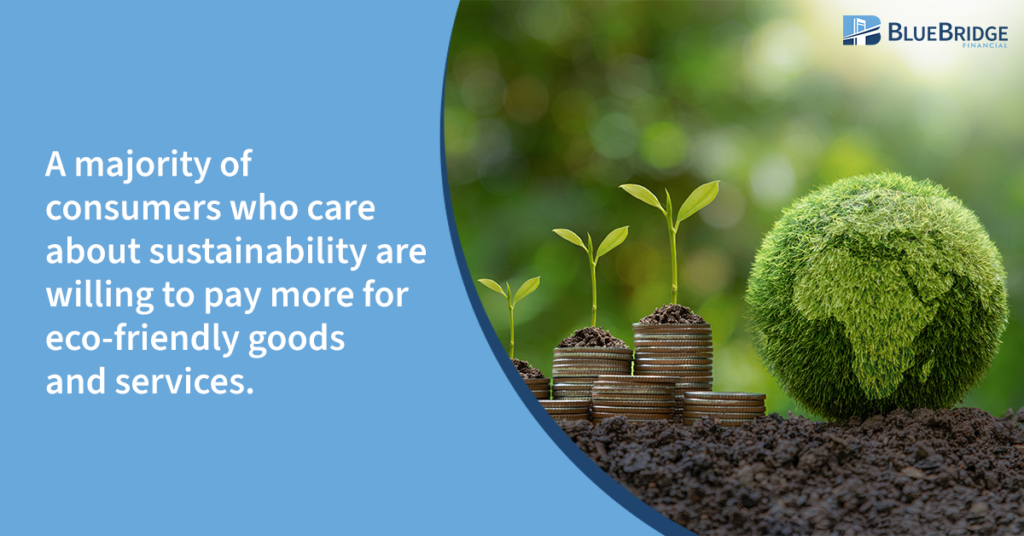
Is Sustainability Better For Business?
Consumers, especially younger generations, want to support companies that match their values. According to a McKinsey survey, a majority of consumers who care about sustainability are even willing to pay more for eco-friendly goods and services. So, don’t hide your investment in green equipment and other sustainability improvements. This can be a good PR opportunity to boost awareness and opinion of your brand; for example, you could use social media to display photos of your company’s green investments.
How To Benefit From Cost Savings With Green Equipment
As mentioned, investing in green equipment doesn’t just have to be for ethical reasons. It can also bring cost savings and tax benefits.
Federal Grants
Check your state’s environmental agency to see what grants are available on the state level. Federal grants for environmental investments or improvements include:
- USDA Grants: The Rural Energy for America Program provides grant funding to agricultural producers and rural small businesses for energy efficiency improvements and renewable energy systems.
- EPA Grants: The Small Business Innovation Research (SBIR) Program provides funding for the development of new technologies to provide sustainable remedies to environmental issues.
- DOE Grants: Funding is available for Energy Efficiency and Renewables projects.
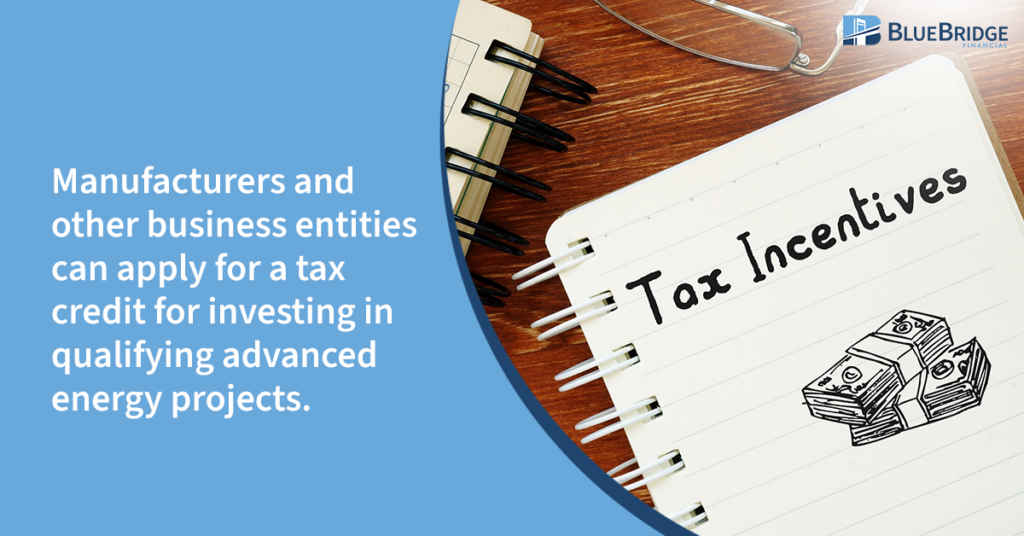
Federal Tax Incentives
Check your state’s department of revenue to see what tax credits are available on the state level. Federal tax credits for small businesses include:
- Research and Development Tax Credit: Under the Inflation Reduction Act (IRA), the R&D tax credit has been doubled for small businesses (from $250,000 to $500,000).
- Clean vehicle tax credit: Businesses who purchase or lease an EV or fuel cell vehicle may be eligible for a tax credit.
- Energy Efficient Commercial Buildings: If you own a commercial building, you may be eligible for a tax deduction for creating an energy-efficient commercial building property (EECBP) or retrofitting an existing property to be more energy efficient.
- Builders of energy-efficient homes: Eligible contractors who build or substantially reconstruct qualified energy-efficient homes may be able to claim tax credits up to $5,000 per home.
- Advanced Energy Project Credit: Manufacturers and other business entities can apply for this tax credit for investing in qualifying advanced energy projects.
- Section 179: Can potentially deduct the full cost of qualifying equipment in the year you bought it instead of taking a deduction for depreciation over a period of years.
While the upfront costs of making some of these changes and investments may be higher, environmentally-friendly products and improvements tend to last longer. For example:
- Raw materials are generally made of better quality, and the products themselves tend to have higher standards. They have to go through rigorous testing and inspection.
- LED lightbulbs last up to 50,000 hours while incandescent bulbs only last 750 hours.
- Green facilities also use less waste and more energy-efficient processes like alternative energy.
Balance The Cost of New Equipment With Potential Payoff
Any new investment in your business can be expensive upfront, with the payoff coming later through tax breaks, efficiencies, and increased profit margins. So, how can your business weigh the pros and cons of a new investment in green equipment? Consider an Equipment Finance Agreement (EFA), which provides up to 100% financing for your equipment purchase. An EFA can help you purchase new green equipment for your business without taking on a huge upfront cost.
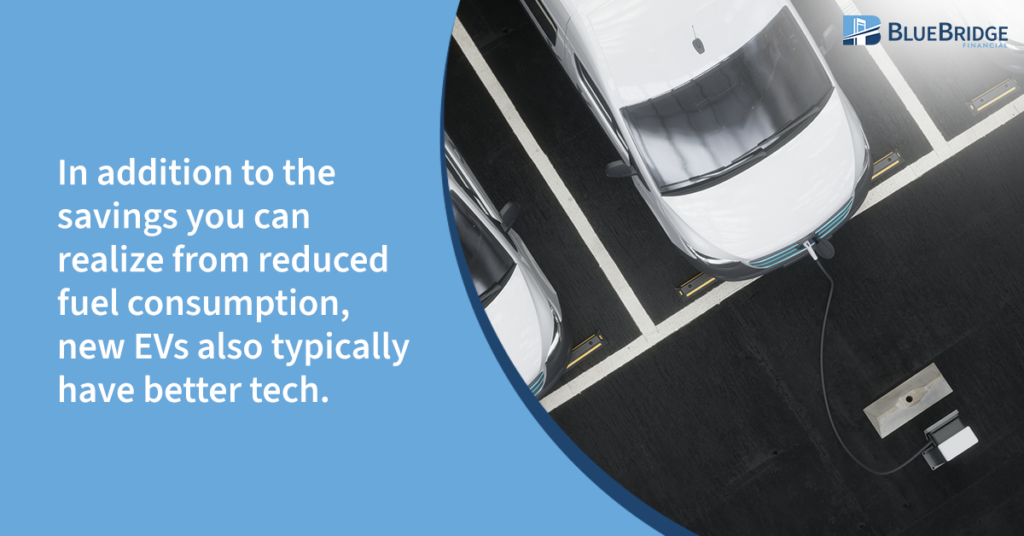
Where Can I Start With Investing In Green Equipment?
The answer to this question will depend on the type of business you have. For example, if you have a fleet of trucks, heavy equipment, or other vehicles, you could decide that each new fleet purchase will be an EV. In addition to the savings you can realize from reduced fuel consumption, new EVs also typically have better tech, which lets you monitor the health of the entire vehicle.
Another example is a restaurant investing in more energy-efficient equipment such as refrigerators, warmers,cooktops, and ovens.
If you make and sell a product, look for ways to manufacture your product more sustainably, use recycled packing materials, and bring sustainability to the shipping and return process.
Finally, you can always look for ways to make your office or building more eco-friendly through the installation of solar powers, energy-efficient lighting, eco-friendly toilets, and so on.
About Blue Bridge Financial
Blue Bridge Financial is your experienced equipment lender for all types of businesses nationwide. We can help you finance your next equipment purchase with easy and fast approvals, competitive rates, and monthly payments tailored to your budget. We also offer a 90-day payment deferral program so you can reap some of the rewards of your new equipment before starting payments on your loan. Contact us to learn more about our equipment financing options and start the application process.
Any Questions? We'd Love to Talk:
About the Author
Nick Devernis is the Vice President of Business Development with expertise in credit analysis and equipment financing. With over 6 years in equipment financing, he offers a wealth of knowledge to readers of Blue Bridge Financial’s blog. He currently oversees the California office and leads the Sales and Marketing departments. Nick’s role as Vice President of Business Development involves management of the sales team, relationship management, and developing strategic partnerships to drive inbound and outbound originations.p> LinkedIn Profile


